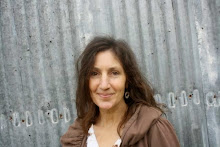Sunday, November 28, 2010
Tuesday, October 19, 2010
The secret: Your body is your instrument so I always did a lot of yoga.
ESTHER TUTTLE, 99 “I think the secret of a long life is partly genes, but I also think it’s being conscious of your body. Your body is your instrument. So I always did exercises, did a lot of yoga, stretching exercises and walking.
From a NYTimes article Tuesday, October 19, 2010: http://www.nytimes.com/2010/10/19/health/19Voices1.html?_r=1&th&emc=th
Many of the students in my Senior/Adaptive Yoga class have studied with me for many, many years. And many are in their 80s and 90s. I learn so much from them.
Labels:
aging and yoga,
conscious of your body,
senior yoga
Thursday, June 3, 2010
Bricklayers yoga
Bricklayers tossing bricks from a boat in Bangladesh.
This link came from my teacher, Ramanand Patel:
http://winolajet.multiply.com/video/item/8/Brick_Laborers_in_Bangladesh
This link came from my teacher, Ramanand Patel:
http://winolajet.multiply.com/video/item/8/Brick_Laborers_in_Bangladesh
Wednesday, June 2, 2010
Wednesday, May 19, 2010
Fundamental Positions
When I teach yoga, I often move outward from the basics through a series of fundamental positions.
Fundamental positions can include:
*On your back (bend your knees if your back is uncomfortable)
*On your hands and knees (if you can be on your knees)
*Standing on two feet (Tadasana or Mountain Pose)
*Seated (either on a chair or on a folded blanket)
Depending on your abilities, you can work from just one of those positions for a whole practice session.
To be continued.
Fundamental positions can include:
*On your back (bend your knees if your back is uncomfortable)
*On your hands and knees (if you can be on your knees)
*Standing on two feet (Tadasana or Mountain Pose)
*Seated (either on a chair or on a folded blanket)
Depending on your abilities, you can work from just one of those positions for a whole practice session.
To be continued.
Sunday, May 16, 2010
Tea yoga
Wake up. Drink a glass of water. Start to heat water for tea.
Everyone's kitchen is different but usually there is a counter or a chair nearby. In my kitchen, I look out the window at the garden while my water heats. I stand with my legs extended, heals under hips, interlocking fingers, turn palms toward the ceiling and stretch arms overhead.
Balance. Hold onto the counter if you need to. Practice balancing on one leg. Draw the other leg (the thigh, knee bends) toward your chest. Stay there as you breathe. Transfer weight to both feet on ground. Stretch arms up with fingers interlocked - the other interlock. Other side. Back to two feet.
Water hot? Add tea.
Everyone's kitchen is different but usually there is a counter or a chair nearby. In my kitchen, I look out the window at the garden while my water heats. I stand with my legs extended, heals under hips, interlocking fingers, turn palms toward the ceiling and stretch arms overhead.
Balance. Hold onto the counter if you need to. Practice balancing on one leg. Draw the other leg (the thigh, knee bends) toward your chest. Stay there as you breathe. Transfer weight to both feet on ground. Stretch arms up with fingers interlocked - the other interlock. Other side. Back to two feet.
Water hot? Add tea.
Thursday, May 13, 2010
Heels pressing into wall - Dandasana
Heels pressing into wall. Soles of feet broad. Toes reaching.
Legs straight.
Sit bones drawing away from wall. (Place a folded blanket under the sit bones if needed.)
Head of femur (thigh) bones drawing down. (Place sand bag there if available.)
Quadriceps engaged.
Spine extends.
Legs straight.
Sit bones drawing away from wall. (Place a folded blanket under the sit bones if needed.)
Head of femur (thigh) bones drawing down. (Place sand bag there if available.)
Quadriceps engaged.
Spine extends.
Your head: Let Atlas hold atlas
Atlas holds up the earth.
And all day you hold up your head.
Let Atlas, the earth, hold your head.
Lie on your back. A blanket neatly folded to support the curve of your neck and the weight of your head. Knees bent or straight, whichever is more comfortable. Arms outstretched from the center of your chest. Palms up. Shoulder blades rest behind your back ribs. Release jaw. Breathe.
Find center with your head. Align your nose with your spine. Breathe in. As you breathe out, allow your head to turn to the side. Breathe in. Back to center. Breathe out. Turn your head to the other side.
The hardest part is letting the earth hold your head as you passively allow your head to roll to each side, coordinating your breath with the movement. The movement slows as the breath lengthens as the upper body warms up.
Subscribe to:
Comments (Atom)


